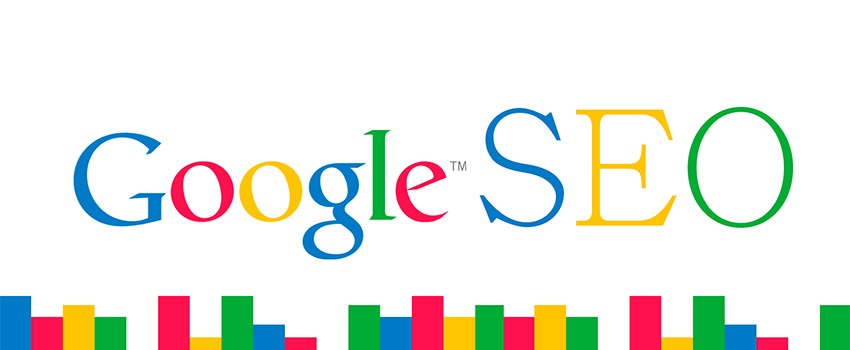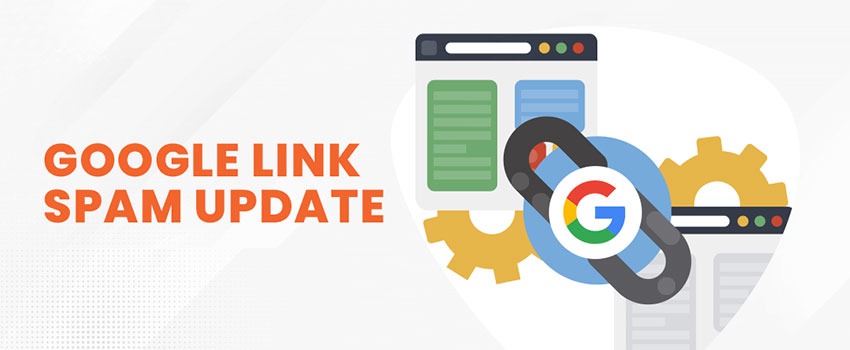Tips and Tricks That Improve Website Conversion Rate
Website conversion rate is an important metric to monitor and improve upon if you want to grow your online business. Whatever your business could be, you need to know what your conversion rate is because it is an important metric to help understand your business success and useful to you if you will need to work for an improvement. In this post, we’ll reveal some techniques that will help you understand and improve the rate at which your website converts.
What Is Conversion Rate?
Understanding conversion rate could be much easier if you understand what “conversion” means. Take a conversion to be an action performed on your website. It could be a click, a purchase, filling a form, participation in a survey, making a comment or any other action. In this sense, conversion rate is a percentage of visitors that perform these activities.
Measuring conversion rates therefore is about measuring website goals and the rate at which these goals are achieved relative to the number of visitors to the website. Conversion rate as a metric is measured over a specific time period, so it can be hourly, daily, monthly or yearly.
For example, if a website has 500 visitors in a week and 10 of those visitors made a purchase, the conversion rate is 2%.
Depending on the website goals, website visitors are converted when they take action, such as:
- Making a purchase.
- Clicking a button.
- Signing up for a mailing list.
- Liking a video or image.
- Scheduling an appointment.
A high conversion rate indicates a high quality content and implies that people are interested in your content and offerings while a poor conversion rate suggests that your content is underperforming. Many successful executives measure overall conversion rates for everyone who visits their website, plus those from specific traffic sources.
What you should be guided by is that this figure represents the ability of a website to achieve its goals of getting visitors to act in the way it desires. There are numerous factors that affect the capacity of visitors to convert including:
- Accessible design.
- Competitive product offerings.
- Quality content.
Further reading:
- Complete Guide to Website and Competitor Analysis
- 3 Important SEO Considerations Good For e-Commerce Websites
Who Uses Conversion Rates?
Every business manager wants to know how well it is performing and achieving its goals. But more specifically, conversion rate figures can be very useful to business development and marketing executives who rely heavily on their conversion rates metrics to project how successful they have been and how best they are serving their clients.
Generally, if you work with web content, you should find conversion rate figures quite useful. When you compare your website conversion rates with company averages, you can judge your performance and how much you are attracting and winning the interest of your website visitors.
Conversion rate figures can help planning and control. We look at how business executives and marketing professionals use conversion rate figures in planning and business management.
Marketing Professionals
Marketing professionals are guided by conversion rate figures in formulating advertising campaigns. Conversion rate figures can help determine the markets that are more profitable and more likely to respond positively to an advertising campaign by way of purchases or complying with other desired actions.
Conversion rate figures can also be helpful in determining effective advertising methods. This is achieved by monitoring the metrics for different ad copy and how different markets respond to the campaign. That way, marketing professionals are able to take decisions of advert design and execution schedules to achieve the best results.
Salespeople
As a corollary to how marketing professionals use the conversion rate metric, sales people can also use it to determine how their website referrals are actually performing in respect of making a purchase. Conversion rates can help salespeople understand the right markets that are yielding desired results so they can direct more energy into those classes of consumers.
Web Developers
Oftentimes, you will find that changes to website content can affect conversion rates. Web designers can monitor their website conversion rates to determine which content strategy is driving the best results.
Depending on the purpose of the website, the addition of features and how visitors respond to them will help web developers improve conversion rates. Features like digital shopping cart, payment options, account creation, and page navigation should be noted for how they affect website conversion rate.
Content Developers and Writers
The nature of a website’s content can affect how visitors and customers respond to them. If certain content do not produce the right and desired results, then content developers should be encouraged to avoid them and more towards more receptive content.
Consultants and Data Analysts
Consultants and data analysts will often rely on website conversion rate figures to advise their clients on appropriate markets to advertise and invest in.
Why Are Conversion Rates Important?
Conversion rate is certainly one of the most important metrics you should be interested in as far as digital marketing is concerned. Every activity is designed to achieve a conversion in the form of a sale or other goals. Conversion rates will measure the performance of your website and advertising channels.
Here are the top reasons conversion rates are especially important:
1. They Help Predict Success
Good conversion rates are a sign of success. They tell you how well your marketing campaigns are performing. Conversion rates give you a straightforward assessment of which areas your company is performing well.
2. High Conversion Rates Save Money
The higher the conversion rate, the cheaper your advertising expenditure will be. Pay-per-click costs are always on the rise as the demand for platforms such as Google AdWords increase. You could be losing money if you’re not converting clicks into sales.
3. Focusing on Conversion Rate Improves Content
When you are focused on attaining good conversion rates, you will develop content that converts.
4. Conversion Rates Indicate Consumer’s Attention
Good conversion rates indicate that you are getting the right attention and customers are impressed with your offers. Getting customers has become increasingly important as consumers show shorter attention spans. It means content must be improved to catch the attention of customers very quickly and not just that, they have to act positively too.
Essential Conversion Rate Metrics
This list of essential conversion rate metrics can help focus on the most critical metrics to focus on. This is important because there are an overwhelming number of useful metrics you need to evaluate. For busy executives, this can be time-consuming and not feasible given limited resources. Focus on these important conversion rate metrics and you can achieve and understand your website conversion rate performance and improve them:
1. Traffic Sources
The most significant metric isn’t always how many people visit you, it is more helpful to understand where the traffic is coming from. Understanding your traffic sources can help you examine the countries or territories that convert better. That can help you channel your advertising budget more appropriately.
There are three primary sources of traffic:
- Direct visitors. These visitors directly typed your URL in their browser’s address bar.
- Search visitors. These are people who found you through a search engine, such as Google.
- Referral visitors. These guests clicked on your link from another website, social media page, or somewhere else.
2. New Visitor Conversion Rate
New visitor conversion can guide you on what first time visitors like and that can influence how content is designed to increase conversion.
Visitors aren’t spending so much time on websites anymore so as much as possible, it is important that your website content be crafted to attract visitors and get them to act. Take the following factors into consideration:
- Usability. How easy can visitors navigate your site?
- Clarity. How easy is it for visitors to understand the site’s message and what it is all about?
- Value. Are the visitors having access to the information they need and are the information presented in a usable manner?
3. Return Visitor Conversion Rate
This measures the rate at which visitors returning to the site converts. Your analysis of return visitors should address three key questions:
- Why did the person return? Is he visiting a particular page again?
- Did the customer convert the first time?
- How can you get them to convert again?
High rate of return visitors indicates page quality. The good thing is that returning visitors indicates that the return is an opportunity and can make it easier to convert than the first time they found your site.
4. Interactions Per Visit
Not all visitors will convert. But it is important to watch and understand their behavior on the website. Are they spending reasonable time on the site, are they clicking on other pages, are they showing that content is interesting.
Analyzing these dates can guide you on what improvements can lead to a sale and other targeted conversion goals.
5. Value Per Visit
The value of each visit is a simple metric to understand. Basically, it reveals how much each visit is worth and the good thing is that there is analytic data that guides you on these.
6. Cost Per Conversion
Cost per conversion — also called cost per referral — is one of the most critical metrics you can calculate.
How much does it cost to convert a visitor? We can use the figures to determine if the investment will pay off overtime. It may be high in the interim but it can be very beneficial overtime. You must be sure that the cost of conversion is being offset. If the cost of conversion constantly exceeds the value of the conversion, then it is worth reviewing the strategy.
7. Bounce Rate
Bounce rate reflects the percentage of people who leave a website after visiting the landing page. When you have a high bounce rate, it means conversion will be difficult.
High bounce rates are often related to:
- Lack of trust
- Poor visual design.
- Confusing usability.
- Slow load times.
- Complicated checkout process.
- Surprise costs or fees.
- Unattractive content.
8. Exit Pages
It is important to understand which pages are causing high exit rates. You can improve on the pages to gain more user confidence,, deduce bounce and exit rates and increase dwell time.
How To Calculate Your Conversion Rate
Not knowing how to calculate website conversion rates can hurt your business and get you to make huge marketing expenditures in the wrong markets. Being able to calculate your conversion rates will help you to:
- Direct your promotional expenditure appropriately
- Develop an efficient advertising budget.
- Decide when and why you need to hire additional salespeople.
- Determine your organization’s profitable markets.
To calculate the conversion rate, you need to clearly define what amounts to a conversion, be it a sale, newsletter signup, review, or something else.
Use the steps in this formula:
- Start with the total number of conversions.
- Divide that number by your variables, such as the total number of hits, unique visitors, or leads.
- Multiply the result by 100 to get your conversion rate as a percentage.
What Is a Good Conversion Rate?
Conversion rates vary according to industry. What is important is the industry average. If your conversion rate is above the industry average, then you are doing good.
So, what is a good conversion rate? Metrics vary by industry, however, the average landing page conversion rate for a website in the U.S. is a surprisingly low 2.63% during the year 2020. Does that mean that if you see numbers around 3%, 5%, or even 12% or more, that’s as high as you can go?
A skilled marketing professional must understand that conversion rates vary by industry, such as retail, business-to-business, legal, and finance. What may be stellar for a high-end electronics dealer may be below par for someone selling cheap clothing. Google play has one of the highest conversion rates in the biz: a whopping 30%.
Some standard variables that impact your company’s conversion rate include:
- Product type (fashion, electronics, software, etc.)
- Product cost
- Traffic source (lead generation websites, affiliates, etc.)
- Device (desktop, mobile, and tablet)
- Platform (Android, Windows, Mac, or iOS)
- Location
Factors That Impact Conversion Rates
Six kkey factors affect conversion rates and these can be very useful for e-commerce stores:
1. Perceived Value
Are your visitors able to immediately see the benefits of buying your product, using your service or taking the action you desire of them? If the benefits of your services outweighs the costs, your guests will likely convert. If either your product or proposition is weak, you’ll have to redefine it to improve your conversion rate.
2. Complexity
Is accessing your internal pages and finding what customers need easy and accessible? The easier it is, the higher will be your website conversion. If you are not recording a high conversion, then improve on website usability.
Ensure that your website addresses the following problems:
- Taking too long to load.
- Complex shopping cart.
- Complex and long forms to fill.
Also read:
- Google Exact Match Keyword Penalty Explained
- Conversion Rate Optimization and Internet Marketing Goals
3. Clearly Defined Goals
It is important that you clearly communicate what you want visitors to do. Do you want guests to upgrade their service or do you want to capture their email address for a subscription? Be clear about what you want visitors to do and do not try to perform too many tasks at the same time.
4. Your Client’s Trust
Are you having abandoned carts? That suggests a lac of trust. You will need to establish credibility so that your visitors will feel comfortable converting.
Build a perception of credibility and earn a solid reputation with these tips:
- Deliver valuable content.
- Maintain an authoritative voice.
- Engage customers in communication.
- Solicit user-generated content and reviews.
- Always act responsibly.
Also read: Principles of Good Website Designing
5. An Inviting Design
Having an inviting and authoritative design is the first step in building trust. Ensure that your color contrast, combination and content organisation shows that you know what you are doing and can be trusted. You may want to borrow from the success of leading brands.
Be focused and make good use of every opportunity because visitors do not have all the time to investigate your brand beyond the impression they make from their visits. According to Nielsen Norman Group, users often leave a web page within 20 seconds. Don’t distract your visitors with obnoxious blinking banners as they scroll through your page.
How To Boost Conversion Rates
We have discussed the importance of conversion rates to the success of your marketing program so you should by now be inquisitive about how you can improve this metric. Here are eight optimization tactics that can boost your conversion rates:
1. Sharpen Your Pay-Per-Click Ads
Pay-per-click (PPC), also called cost-per-click advertising (CPC), is one of the top strategies to get more conversions and grow your website’s ranking. A sharp and attractive message, strong headline can entice potential customers to click on your digital ad.
2. Optimize Your Landing Pages
Use analytics to identify landing pages and work on them to improve conversions
Here are some useful guide:
- Simplify the design of your website and keep it free of visual clutter.
- Include a clear offer.
- Use an active call to action (CTA) that is pronounced.
- Include contact information.
3. Test New Ad Funnels
The “sales funnel” is a pro marketing term that describes each step someone must take to become your customer. You may need to conduct some research on the performance of your advertising funnel and make some adjustments to optimize them for better performance.
4. Prune Down Your Audience
Focusing on a profitable niche can be far more rewarding than trying to serve the entire population. Try to identify the markets that are converting and focus on leading in those markets by investing your promotional efforts into them.
5: Grow Your Social Media Following
Encourage visitors to follow you on social media. That way, they will be informed about your offers and the improvements you make to your products.
If you have a large social media following, display those figures on your pages as a testament to your engagement and trust. Consider promotions through:
- Contests.
- Video sharing.
- hashtags.
6. Work With a Professional
Content is king, they say, and should be taken very seriously. Consider working as a professional to create compelling content that converts.
Final Words
Every business is set up to make profits, provide some services and to be sustainable. Sustainability depends on how well it is achieving its goals and getting the required funding to survive.
Business managers should be very concerned about their website conversion rate to provide them with data on how well they are performing and where necessary should take steps to protect the business from collapse.
Conversion rate figures can tell you how well you are performing and relating that to your marketing expenditure, you can decide if your marketing program is sustainable and also leading to profits or other forms of expected conversion.











